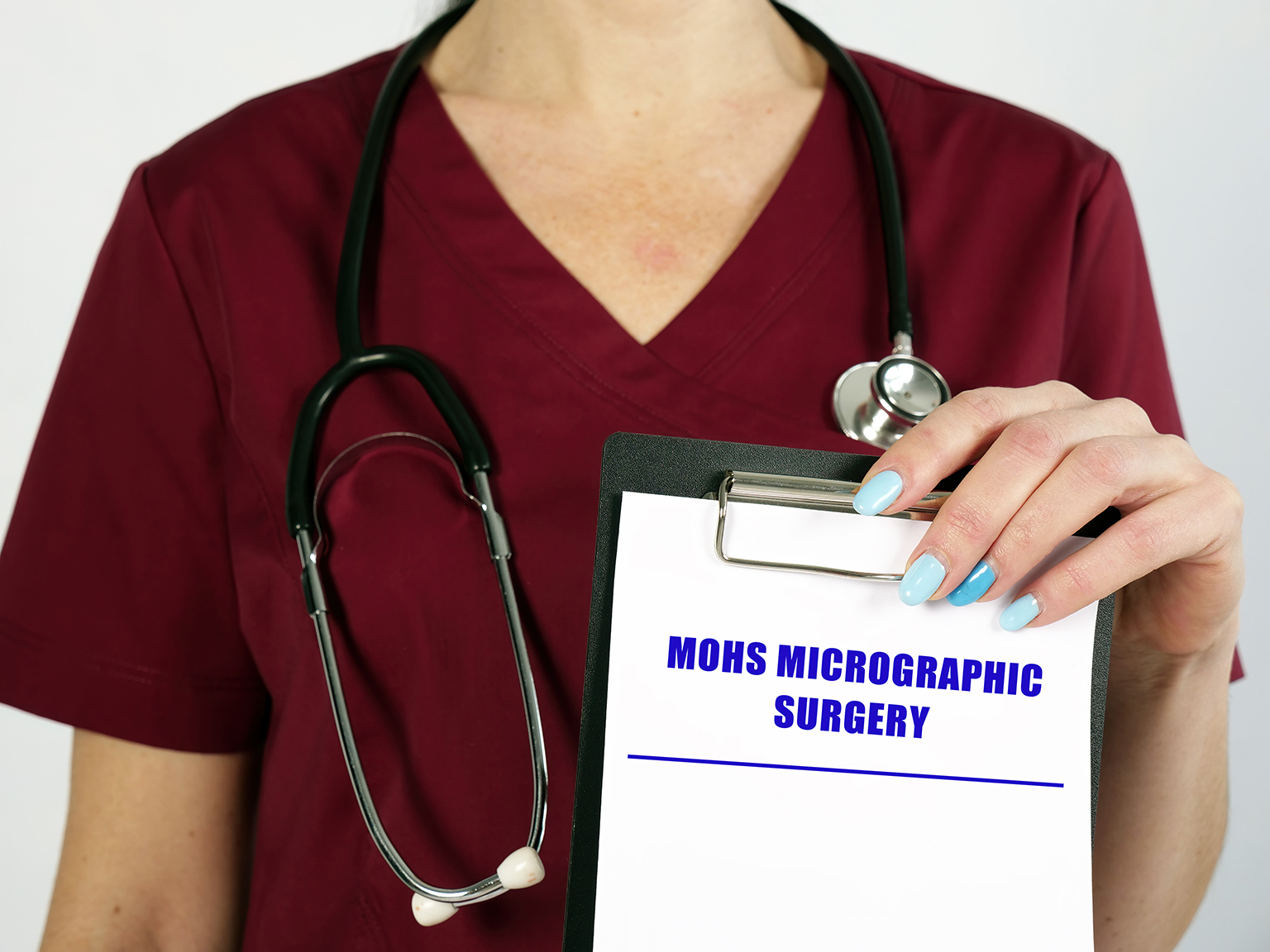Reconstruction after Mohs Surgery in Thousand Oaks

Mohs micrographic surgery is a specialized technique utilized in the treatment of skin cancer. The procedure preserves as much healthy tissue as possible to aid in reconstruction. Read on for insights into Mohs skin cancer treatment and reconstructive surgery options from the experts at Kryger Institute of Plastic Surgery in Thousand Oaks, CA.
Mohs Surgery Technique
Unlike traditional excisional techniques, which involve removing a predetermined area of tissue, Mohs surgery entails the systematic removal and microscopic examination of thin layers of tissue until no cancer cells are detected.
Here is how the procedure typically unfolds:
- Tumor Removal – The surgeon begins by removing the visible portion of the tumor along with a thin layer of surrounding tissue.
- Tissue Examination – The excised tissue is immediately processed and examined under a microscope to check for the presence of cancer cells at the margins.
- Layer-by-Layer Analysis – If cancer cells are detected at the margins, another layer of tissue is removed from the precise location where the cancer cells were found, and the process is repeated until no cancer cells remain.
- Tissue Reconstruction – Once the cancer has been completely removed, the wound is evaluated for the best reconstructive options to restore function and aesthetics.
Benefits of Mohs Surgery
Mohs surgery offers several advantages over traditional excisional techniques, including:
- High Cure Rates – Mohs surgery boasts remarkably high cure rates, often exceeding 99% for certain types of skin cancer, particularly basal cell carcinoma and squamous cell carcinoma.
- Tissue Preservation – By meticulously removing thin layers of tissue and examining them microscopically, Mohs surgery minimizes the removal of healthy tissue, thereby preserving function and cosmesis, especially in cosmetically sensitive areas such as the face.
- Precise Margin Assessment – The ability to examine tissue margins in real-time allows for precise margin assessment, reducing the likelihood of leaving cancerous cells behind.
Integration with Reconstructive Surgery
While Mohs surgery effectively removes skin cancer, it often leaves behind a defect that requires reconstruction to restore both form and function. This is where reconstructive surgery plays a crucial role. Reconstructive options following Mohs surgery may include:
- Primary Closure – For small defects, the wound may be closed directly with sutures.
- Skin Grafts – In cases where there is insufficient adjacent tissue for closure, a skin graft may be harvested from another part of the body and transplanted to the defect site.
- Flap Reconstructions – Flap techniques involve moving nearby healthy tissue to cover the defect, providing better aesthetic and functional outcomes, particularly in complex defects or areas with limited tissue mobility.
Contact Us for More Information
To learn about reconstructive surgery following cancer treatment, we invite you to schedule a consultation. Our board-certified surgeons are experienced in collaborating with Mohs surgery providers for a multidisciplinary approach that successfully eliminates cancer and restores the appearance of treated areas. Contact us today and arrange an evaluation for skin cancer reconstruction at Kryger Institute of Plastic Surgery in Thousand Oaks, CA.

